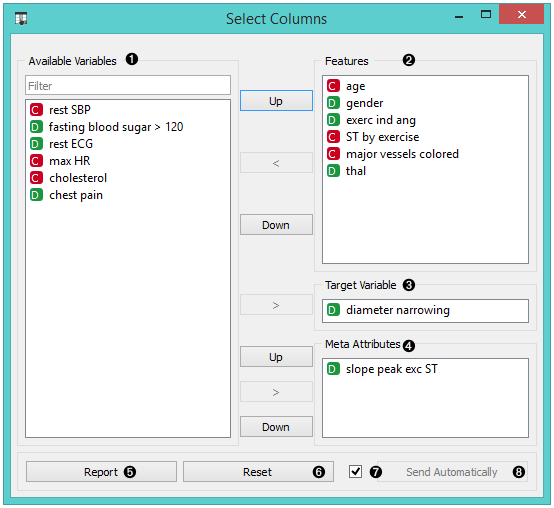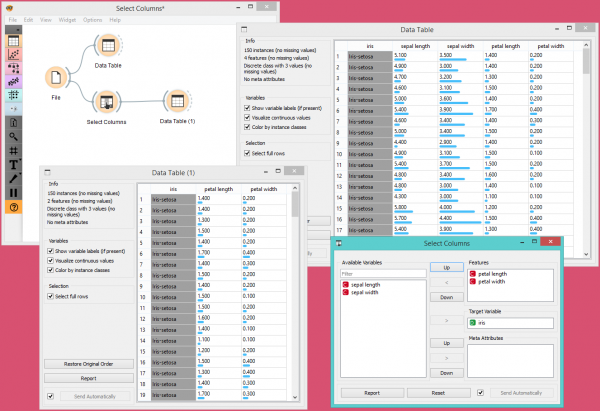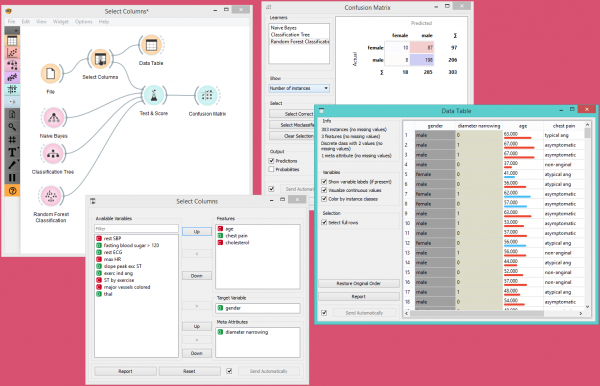Orange: Select Columns
Sumber: https://docs.biolab.si//3/visual-programming/widgets/data/selectcolumns.html
Seleksi manual dari data attribute dan komposisi dari data domain.
Input
Data: input dataset
Output
Data: dataset dengan kolom yang di set di widget
Widget Select Columns digunakan untuk menyusun domain data secara manual. Pengguna dapat memutuskan atribut mana yang akan digunakan dan bagaimana caranya. Orange membedakan antara atribut biasa, atribut class (opsional) dan atribut meta. Misalnya, untuk membangun model klasifikasi, domain akan terdiri dari sekumpulan atribut dan atribut class diskrit. Atribut meta tidak digunakan dalam pemodelan, tetapi beberapa widget dapat menggunakannya sebagai label instan.
Orange attributes have a type and are either discrete, continuous or a character string. The attribute type is marked with a symbol appearing before the name of the attribute (D, C, S, respectively).
../../_images/SelectColumns-stamped.png
- Left-out data attributes that will not be in the output data file
- Data attributes in the new data file
- Target variable. If none, the new dataset will be without a target variable.
- Meta attributes of the new data file. These attributes are included in the dataset but are, for most methods, not considered in the analysis.
- Produce a report.
- Reset the domain composition to that of the input data file.
- Tick if you wish to auto-apply changes of the data domain.
- Apply changes of the data domain and send the new data file to the output channel of the widget.
Contoh
In the workflow below, the Iris data from the File widget is fed into the Select Columns widget, where we select to output only two attributes (namely petal width and petal length). We view both the original dataset and the dataset with selected columns in the Data Table widget.
For a more complex use of the widget, we composed a workflow to redefine the classification problem in the heart-disease dataset. Originally, the task was to predict if the patient has a coronary artery diameter narrowing. We changed the problem to that of gender classification, based on age, chest pain and cholesterol level, and informatively kept the diameter narrowing as a meta attribute.


